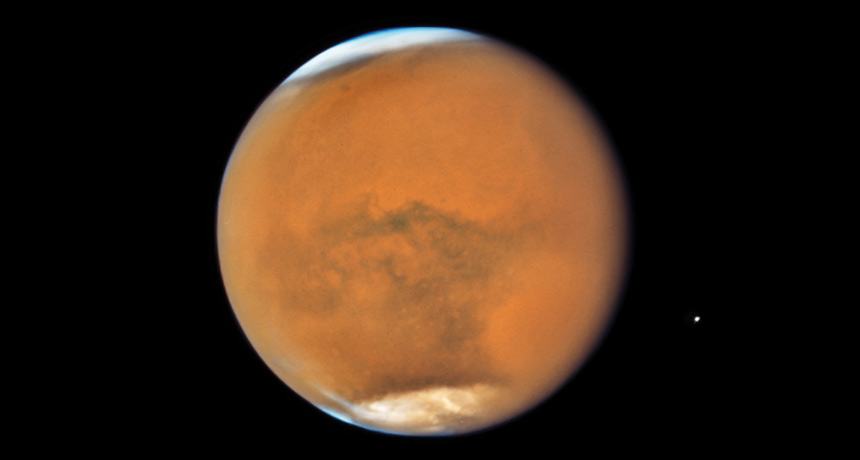Mars’ lake may need an underground volcano to exist
Scientists try to explain how a body of water could remain liquid in such a cold environment

WARMED FROM WITHIN? Mars has frigid polar ice caps. But a theoretical underground chamber of magma could help melt ice near the south pole, creating what some scientists think is a lake hiding under the ice.
NASA, ESA and STScI